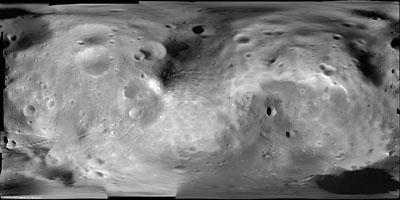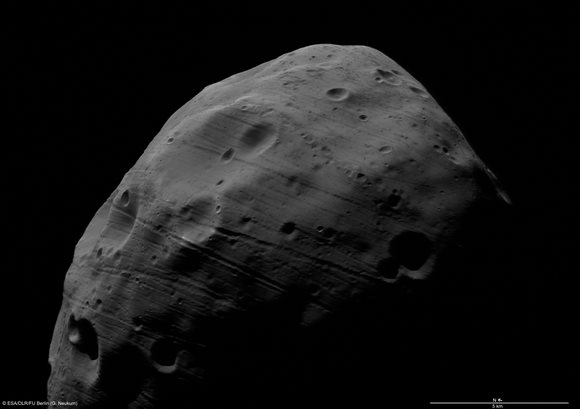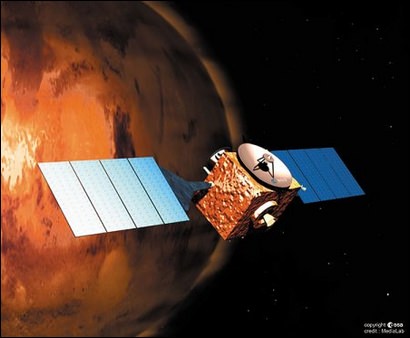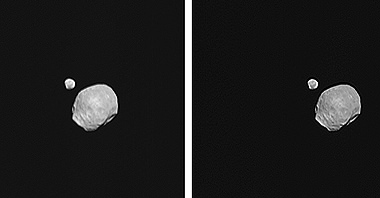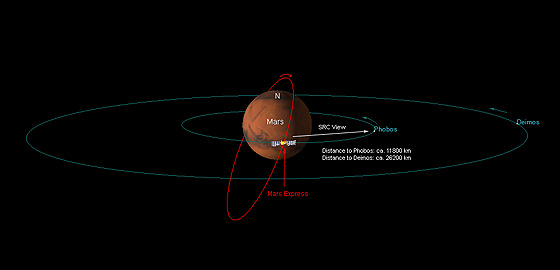[/caption]
Back in the 1950s and 1960s, there was some speculation that Mars’ moon Phobos could possibly be hollow due to the its unusual orbital characteristics. While scientists now agree that the moon is very likely not hollow, vast caverns may exist within the moon, and it might be a porous body instead of solid. The Mars Express spacecraft made a close flyby of Phobos on Wednesday to help provide more data on the interior of Phobos, and all indications are the event was a big success. The spacecraft skimmed smoothly over the odd-shaped moon at just 67 km, the closest any manmade object has ever been. No images were taken from this flyby. Instead all the instruments were turned off so that ground stations could listen for a pure radio signal of how Phobos “tugged” on the spacecraft. Scientists say the data collected could help unlock the origin of Phobos and other ‘second generation’ moons.
“Phobos is probably a second-generation Solar System object,” said Martin Pätzold, Universitat Koln, Cologne, Germany, and Principal Investigator of the Mars Radio Science (MaRS) experiment. Second generation means that it coalesced in orbit after Mars formed, rather than forming at the same time out of the same birth cloud as the Red Planet. There are other moons around other planets where this is thought to have been the case too, such as Amalthea around Jupiter.
Previous flybys of Phobos have shown that it is not dense enough to be solid all the way through. Instead, it must be 25-35% porous. This has led planetary scientists to believe that it is little more than a ‘rubble pile’ circling Mars. Such a rubble pile would be composed of blocks both large and small resting together, with possibly large spaces between them where they do not fit easily together.
The March 3rd flyby was close enough to give scientists the best data yet about the gravitational field of Phobos.
The radio waves travel at the speed of light and took 6 minutes 34 seconds to travel from Earth to the spacecraft on Wednesday night, and by analyzing the data on Phobos’ gravity field, scientists should be able to estimate of the density variation across the moon and detect just how much of Phobos’ interior is likely to be composed of voids.
This flyby was just one of a campaign of 12 Mars Express flybys taking place in February and March 2010. For the previous two, the radar was working, attempting to probe beneath the surface of the moon, looking for reflections from structures inside. In the coming flybys, the Mars Express camera will take over, providing high resolution pictures of the moon’s surface.
Source: ESA

